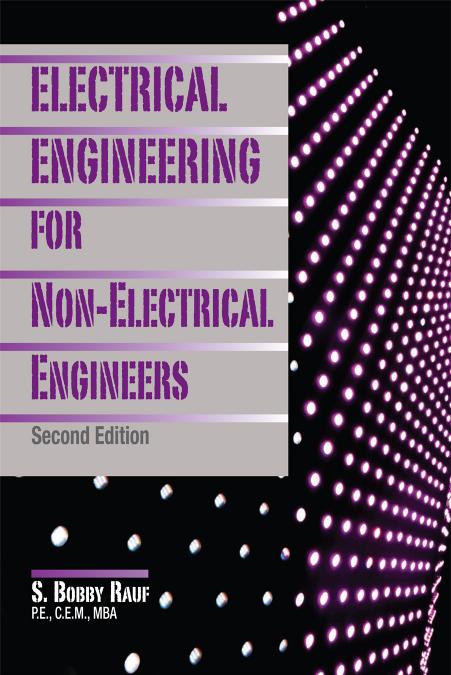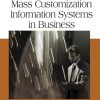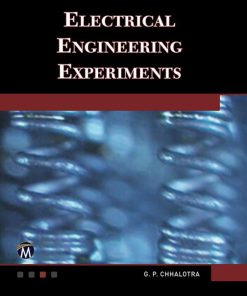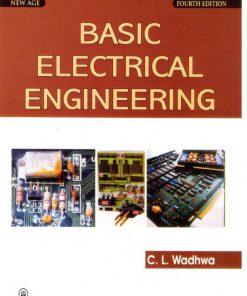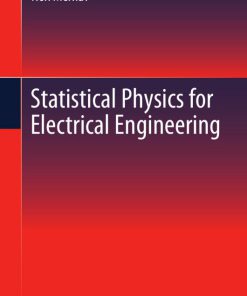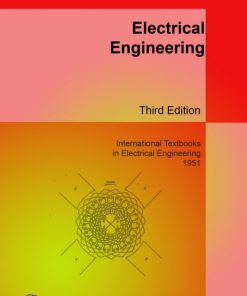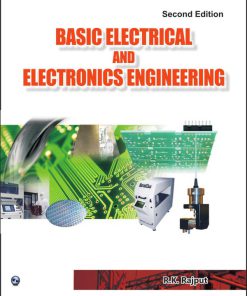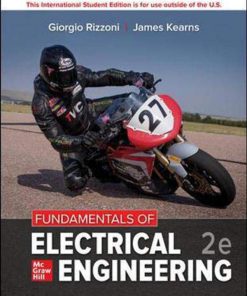(Ebook PDF) Electrical Engineering for Non Electrical Engineers 2nd Edition by Bobby Rauf 1000521435 9781000521436 full chapters
$50.00 Original price was: $50.00.$25.00Current price is: $25.00.
Authors:Rauf, S. Bobby , Series:Electrical Engineering [190] , Author sort:Rauf, S. Bobby , Languages:Languages:eng , Published:Published:May 2016 , Publisher:CRC Press
Electrical Engineering for Non-Electrical Engineers 2nd Edition by S. Bobby Rauf – Ebook PDF Instant Download/DeliveryISBN: 1000521435, 9781000521436
Full download Electrical Engineering for Non-Electrical Engineers 2nd Edition after payment.
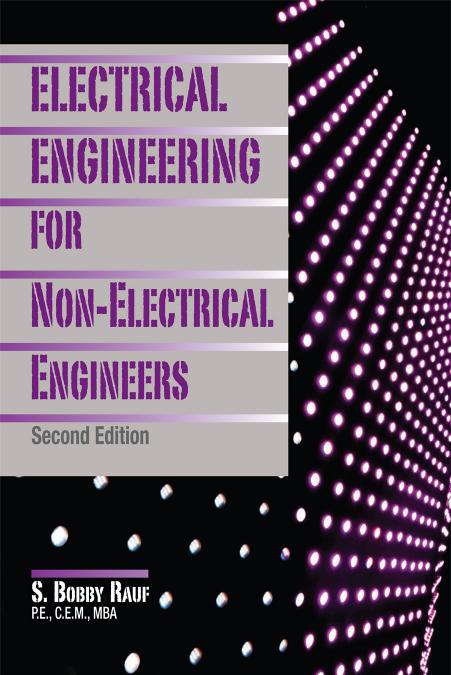
Product details:
ISBN-10 : 1000521435
ISBN-13 : 9781000521436
Author : S. Bobby Rauf
Engineers and non-engineers often eschew electrical engineering because it is premised on concepts and mathematical techniques that are somewhat more abstract and elusive than those employed in disciplines like civil, mechanical, and industrial engineering. Yet, because of the ubiquitous nature of electrical and electronic equipment and devices, and the indispensable role electricity plays in various facets of lives, a basic understanding of electrical engineering is essential. Engineers and non-engineers find themselves interfacing with electrical apparatus and dealing with matters that permeate into the electrical realm. Therein lies the purpose and objective of this book. This edition includes numerous updated pictures, diagrams, tables, charts, graphs, and improved explanation of certain concepts.
Electrical Engineering for Non-Electrical Engineers 2nd Table of contents:
Chapter 1 Electrical Engineering Basics and Direct Current
Voltage
Current
Resistance
Resistors in series
Resistors in Parallel
Electrical Short and Open Circuit
Capacitor and Capacitance
Capacitors in Series
Capacitors in Parallel
Capacitive Reactance
Inductor and Inductance
Series Inductor Combination
Parallel Combination of Inductors
Inductive Reactance
Impedance
Magnetic Circuits Versus Electrical Circuits
Basic Electrical Instruments
Chapter 2 DC Circuit Analysis and Basic Electronic Devices
Ohm’s Law
Kirchhoff’s Voltage Law (KVL)
Kirchhoff’s Current Law (KCL)
Voltage Division
Current Division
Multi-loop Circuit Analysis
Diodes
Half Wave Rectifier
Full Wave Rectifier
Transistors
Electronic Device Applications on Printed Circuit Boards
Chapter 3 Alternating Current (AC) Fundamentals
Alternating Current (AC) Versus Direct Current (DC)
Electrodeposition — DC and the Average Value of AC
Alternating Current and Impedance
Polar or Phasor Form
Rectangular Form
Sinusoidal or Trigonometric Form
Exponential Form
Impedance Analysis
Transformers
Common Single-phase AC Transformer Applications
Autotransformers
Voltage Regulation, Voltage Regulators, and Buck-Boost Transformers
Three-phase AC
Three-Phase AC Systems Versus Single-Phase AC Systems
Current Transformers
Three-Phase AC Transformers
Chapter 4 DC and AC Power
Power
Single-Phase AC Power
Three-Phase AC Power
Efficiency
Power Conversion from Steam to Electrical Form
Power Conversion from Water to Electrical Form
Power Conversion in Hydraulic Pump Systems — Wire to Water Transformation of Power and Energy
Chapter 5 Power Factor
Power Factor
Lagging Power Factor
Lagging Power Factor from Impedance Perspective
Leading Power Factor and Impedance
Power Factor Correction
Chapter 6 Demand, Load Factor, Service Factor, and Electrical Power Bill Computation
Demand
Peak Demand
Load Factor
Service Factor
Computation of Large Industrial or Commercial Electrical Power Bills
Chapter 7 Electric Motors and Generators
DC Generator
AC Alternator
AC Induction Motor
Motor Torque and Power
Single-Phase and Three-Phase Motor Line Current Computation
Three-Phase AC Induction Motor Current
Synchronous Motors
Motor Starting Methods for Induction Motors
Motor Classifications
Typical Motor Nameplate Information for a Large Three-phase Induction Motor
Chapter 8 Power Distribution Equipment, Instrumentation, and Electronic Safety Devices
Voltage Categories in Power Distribution Systems
MCCs or Motor Control Centers
Motor Starter —A-B Bulletin 2100
Variable Frequency Drives — Up to 250 HP:
Smart Motor Controllers (SMCs) — Up to 500 A
Comparison between SMCs, VFDs, and Soft Starts
PLC and I/O Chassis
Main Switch Yard and Medium-Voltage Switchgear
Medium-Voltage Switchgear — Loop Switch
Circuit Breakers
Medium-voltage Circuit Breakers
High-voltage Circuit Breakers
Chapter 9 National Electric Code, NFPA® 70 E and Electrical Standards
Ampacity of Conductors—Table 310.15
Electrical Safety Certifications
NEMA Versus IP Enclosure Ratings
Common Electrical/Electronic Safety Devices
Chapter 10 Electrical Drawings and PLC Relay Ladder Logic Program
Electrical Drawings
One-line Schematic Diagram
Current Carrying Conductor Size
Conduit and Conduit Size
Overload Protection Setting
Starter Size
Overcurrent Protection Fuse Size
Fusible Disconnect Switch Size
Wiring Diagram
Input Control Diagram
Output Control Diagram
Relay Ladder Logic
Chapter 11 Electrical Power Rate Schedules and Electrical Energy Cost Savings Opportunities
Four-Pronged Approach to Electrical Energy Cost Reduction
Electric Utility Rate Schedules
Rates Under OPT-I Schedule
Hourly Pricing Option/Schedule
Areas of Opportunity for Electrical Energy Cost Savings
Energy Performance Contracting and ESCO Opportunities
Electrical Energy Related Measures Typically Included in ESCO or EPC Endeavors
Chapter 12 Illumination and Lighting System Design
Lighting Terms, Concepts, and Standards
Luminous Efficacy or Luminous Efficiency
IESNA Recommended Illumination Levels and Lighting Efficacy Comparison
Lambert’s Law
Illuminance Inverse Square Law
Illuminance Cosine-cubed Law:
Lighting Design Considerations
Daylight-Based Design Considerations
Chapter 13 Batteries
Battery Classifications
Primary Batteries
Secondary Batteries
Li-Ion Battery
Lead-acid or SLI Battery
Comparison of Electrical Energy and Charge Storage Systems
Cost Comparison of Major Secondary Batteries
Discharging Characteristics of Batteries
Charging of Secondary Batteries
People also search for Electrical Engineering for Non-Electrical Engineers 2nd:
electrical engineering for non-electrical engineers course
electrical engineering for non-electrical engineers training
non engineering jobs for electrical engineers
electrical engineering degree requirements
electrical engineering rules
You may also like…
eBook MOBI
(Ebook PDF) Electrical Engineering Experiments 1st edition by Chhalotra 9781683921158 full chapters
eBook PDF
(Ebook PDF) Basic Electrical Engineering 4th edition by Wadhwa 9788122429473 full chapters

